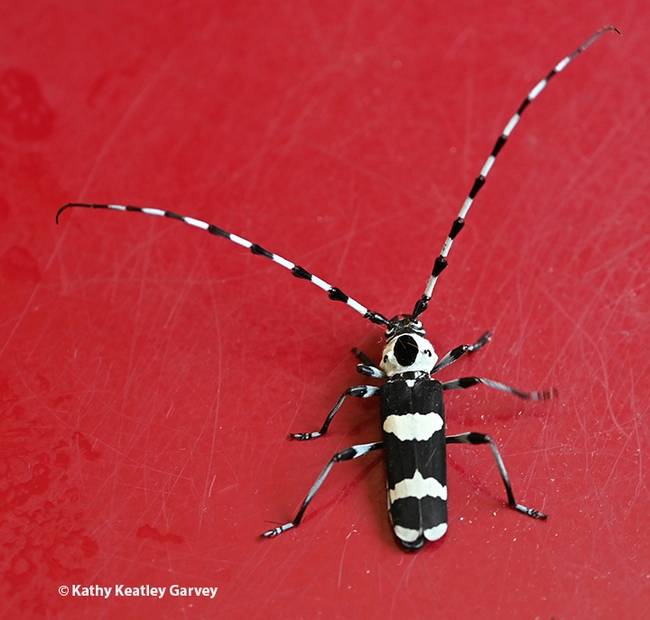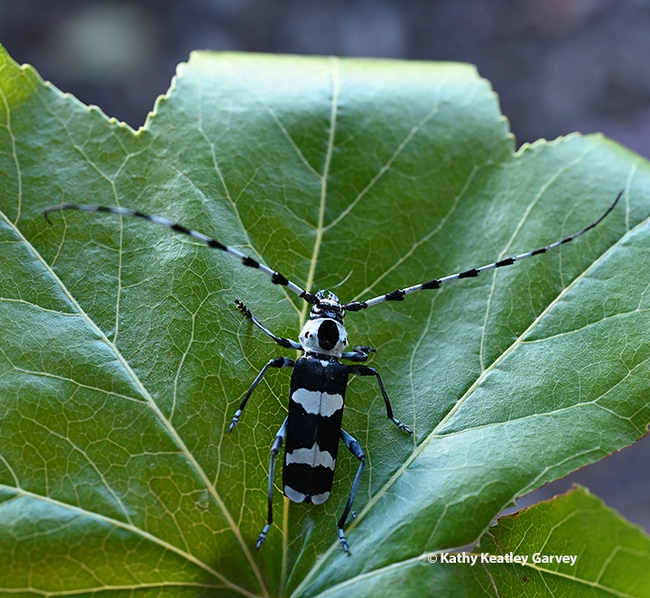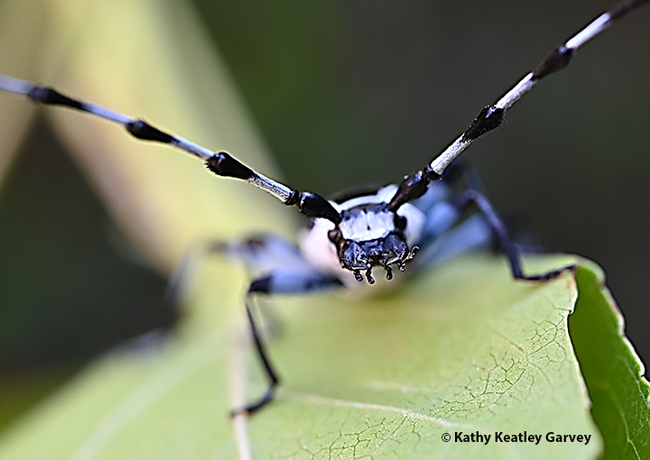So there it was, an exotic-looking bug resting against a freshly painted red bollard at a Vacaville supermarket.
It was not there to shop. Or to stop vehicles from crashing into the store or colliding with shoppers.
It was there, I suspect, because of the pheromone-like scent of the fresh paint.
What was it? A banded alder borer, Rosalia funebris, in the family Cerambycidae. It's a longhorned beetle with spectacular black, white and blue coloration.
Look closely and you'll see the dark elytra (wing covers) with white bands and a white thorax with a large black spot. What's really striking, though, are the long, black-and-white banded antennae. The male antennae are longer than its body.
The beetle "feeds during its larval stage in declining or dead branches of broadleaf trees, including alder, ash, California bay, oak, and willow," according to the UC Statewide Integrated Pest Management Program. "Longhorned beetles develop though four life stages—egg, larva, pupa, and adult. Adult banded alder borers emerge and mate from April through August. Adult females lay eggs individually on small- to medium-sized, dying or recently dead branches. The eggs hatch within 2 weeks and the larvae bore in and feed for 6 to 7 months under the bark. Mature larvae then bore in more deeply to overwinter as pupae. In the spring, pupae develop into adults, each of which chews an exit hole and emerges from the branch."
"The banded alder borer is the only species of this genus in North America, occurring from Alaska to southern California and in the Rocky Mountains from Idaho to New Mexico," according to Washington State University Extension.
However, scientists say it's not a significant pest because the females lay their eggs in downed, damaged or dead branches. The damage is not theirs. They're not the culprits!
You may never see a banded alder borer, but if you're painting a bollard (not going to happen!), your house, or some other structure, you might. Just enjoy its striking beauty!
Attached Images:

The banded alder borer is attracted to fresh paint, probably because of the phermone-like scent. (Photo by Kathy Keatley Garvey)

A banded alder borer, Rosalia funebris, crawls on a leaf. (Photo by Kathy Keatley Garvey)

Side view of the banded alder borer, Rosalia funebris. It's a longhorned beetle in the family Cerambycidae. (Photo by Kathy Keatley Garvey)

Eye to eye with a banded alder borer, Rosalia funebris. (Photo by Kathy Keatley Garvey)